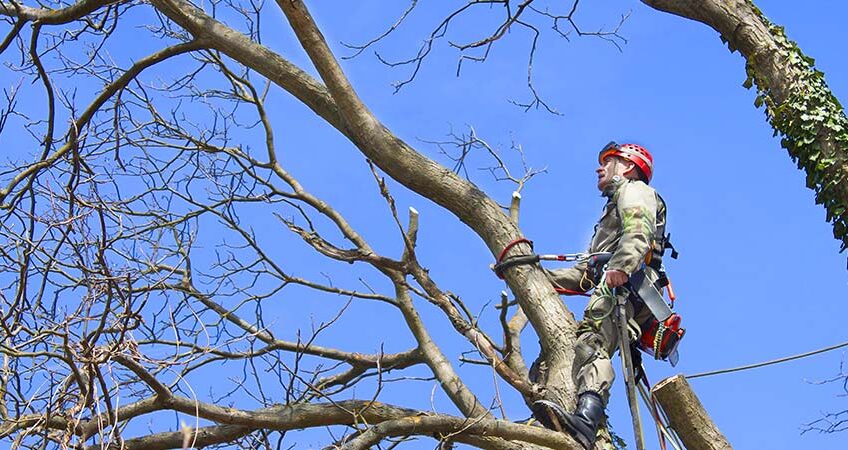Pruning is removing parts of a plant, either above or below ground. Training, an associative term, usually refers to shaping a plant to the desired form. Gardeners prune and train to ensure safety; maintain a plant’s good health; limit or promote growth; to shape; to encourage flowering and fruiting, and to renew and repair. Put more simply, you prune to keep yourself safe, to keep plants hale and hearty, and to make them do—as far as humanly possible and sensible—what you want them to do. Don’t assume that frequent pruning is necessary for every woody plant in your landscape. Desultory pruning is a mistake too. Always know why you’re sawing, snipping, and shearing.
When Do I Prune?
You may prune deciduous trees in the dormant season once leaves have fallen in October or November, but January to March is preferred. Finish pruning in the spring, before color is evident in swelling leaf and flower buds. During the dormant season, much of a tree’s carbohydrates and nutrients are stored in the roots and wood, so few of the food resources needed for growth and overall health will be lost when a limb is removed. (Once leaves have formed, food reserves are then found in the leaves and are more subject to lose by pruning.) Dormant season pruning also reduces the flow of sap from wounds and lessens the chance of damage by insects and disease.
Do I Need a Professional?
You may need the assistance of a tree care professional. Homeowners can safely handle most pruning of a young tree, but pruning high, heavy limbs of mature trees using sharp cutting tools can be very dangerous. If power lines, heights, or valuable property are involved below or near the tree, call a professional. If there is a possibility that the tree or its branches, people, or equipment may come into contact with power lines, always have the power company do the pruning. Just be sure they follow proper pruning techniques.
What Tools Do I Need?
To prune branches of different sizes you may need.
• Hand shears (a): effective for small twigs and branches
• Lopper shears (b): provide more leverage for branches 1 1/2 inches or less in diameter
• A pruning saw (c): cuts large, woody limbs 6 inches or less in diameter
• A chainsaw (d): makes quick work of limbs greater than 3 inches in diameter but shouldn’t be used on small limbs because of its shredding effect
• Pole-pruners (e): include a saw and a lopping shear on an extendable shaft for cutting branches several feet off the ground
• Safety goggles and hard hat: (especially when pruning branches overhead)
Where Do I Cut?
The cut is the key to good pruning. As a rule, always cut back to a branch, twig, or bud that is pointed in the direction you want the tree to grow. This method encourages controlled healthy new growth. If you’re unsure whether to remove a branch, don’t cut. You can always cut it later, but you can never put it back.
At the position where each branch originates from the trunk is a “collar” between the branch and the trunk. This branch collar contains vascular tissues from both the branch and the trunk. If you cut into the trunk tissue, you will interfere with the tree’s natural protective mechanisms, allowing the entry of disease and insect pests that damage the tree trunk. Make your pruning cut outside the collar on the branch side without leaving a stub.
How Do I Train a Young Tree?
A young tree can be successfully trained to grow into a well-structured mature tree. In fact, pruning young trees helps establish their structure and can prevent future problems. It is always easier and more efficient to use pruning as a training technique throughout a tree’s development than to correctively prune mature trees.
If You need help, Call Us or send a message.

